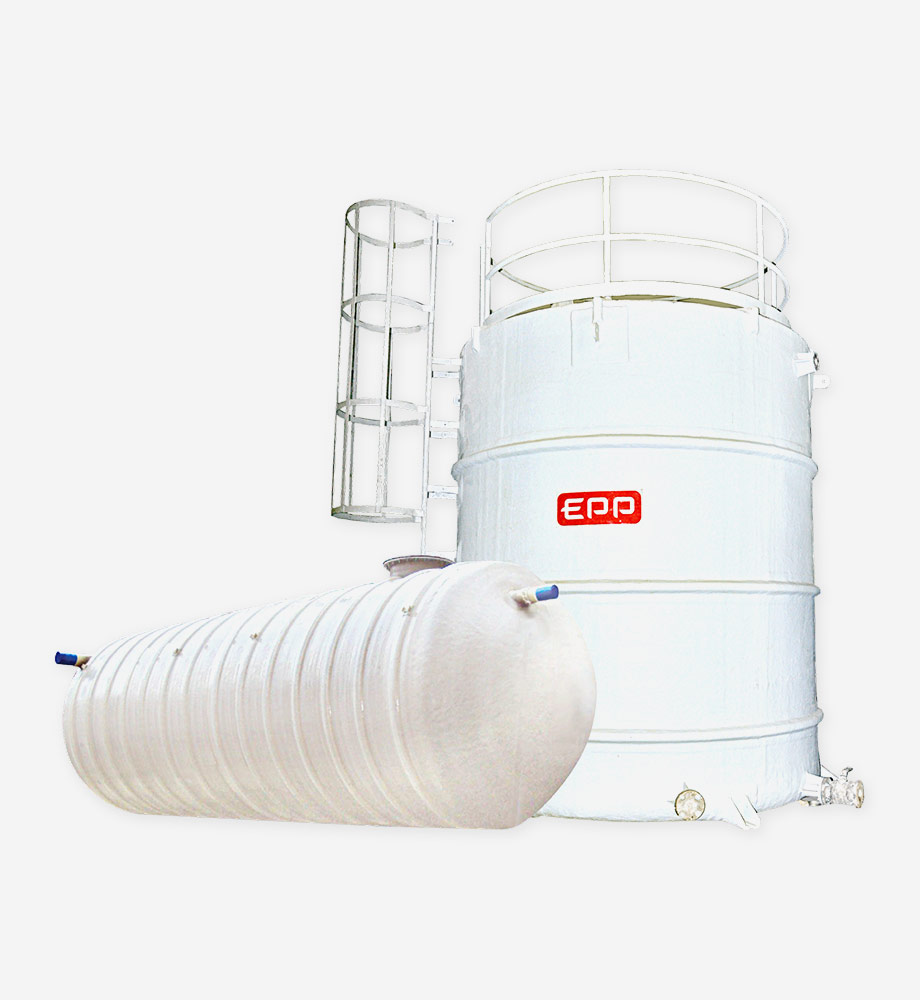Key Features
- Corrosion-Resistant Construction: Inert to acids, alkalies and chlorinated water.
- Lightweight Composite: Fiberglass materials make installation and transport easy.
- High Strength-to-Weight: Supports large water volumes without heavy structure.
- Weather and UV Resistance: Long life in sunlight and varied temperatures (often –40°C to +80°C).
- Customizable Design: Vertical/horizontal cylinders, rectangular tanks, sloped bottoms, etc.
- Dual-Laminate Options: Can include a protective thermoplastic liner (PP/PVC/FRP) for extreme chemistry.
- Smooth Interior: Helps meet hygiene standards for potable water storage.
Benefits
- Long Service Life: Does not corrode or degrade over time, reducing repairs.
- Low Maintenance: Requires little upkeep (no painting or anode replacements).
- Cost-Effective: Lower lifecycle costs vs steel or concrete due to minimal corrosion.
- Fast Installation: Lightweight pieces and modular construction speed assembly.
- Safe Water Quality: Non-leaching materials ensure purity of stored water.
- Energy Efficient: The fiberglass offers some thermal insulation for cold/hot contents.
Applications
- Municipal potable water reservoirs and booster tanks.
- Rainwater harvesting and storage systems.
- Fire protection water storage (firewater tanks).
- Process and service water storage in chemical, petrochemical, and food industries.
- Irrigation and agriculture water storage.
- Pre-RO (reverse osmosis) or polishing/storage in water treatment plants.
- Effluent equalization (in wastewater plants) when corrosion is a concern.
Technical Specifications
- Materials: FRP with polyester/vinylester/epoxy resin; optional inner liner (PP, FRP, PVDF, etc).
- Capacities: Typical 1,000 L to 100,000+ L (custom sizes up to field-fabricated diameters).
- Pressure Rating: Usually atmospheric (open tanks) or low-pressure (for pressurized design).
- Standards: Many meet AWWA D120 (composite tanks) or EN ISO 28765, NSF-61 (drinking water).
- Construction: Filament-wound or hand-layup lamination; thickness depends on size/pressure.
Unique Selling Points (USPs)
- Corrosion Immunity: Unlike steel or concrete, FRP tanks never rust.
- Custom Fabrication: Field-erected options for very large tanks, and variety of shapes.
- NSF-61 Approval: Safe for potable water if specified.
- Thermoplastic Inner Liners: Add a second layer of chemical resistance for acids/alkalis.
- Fast, Modular Deployment: Many sections bolt together on site, reducing downtime.

